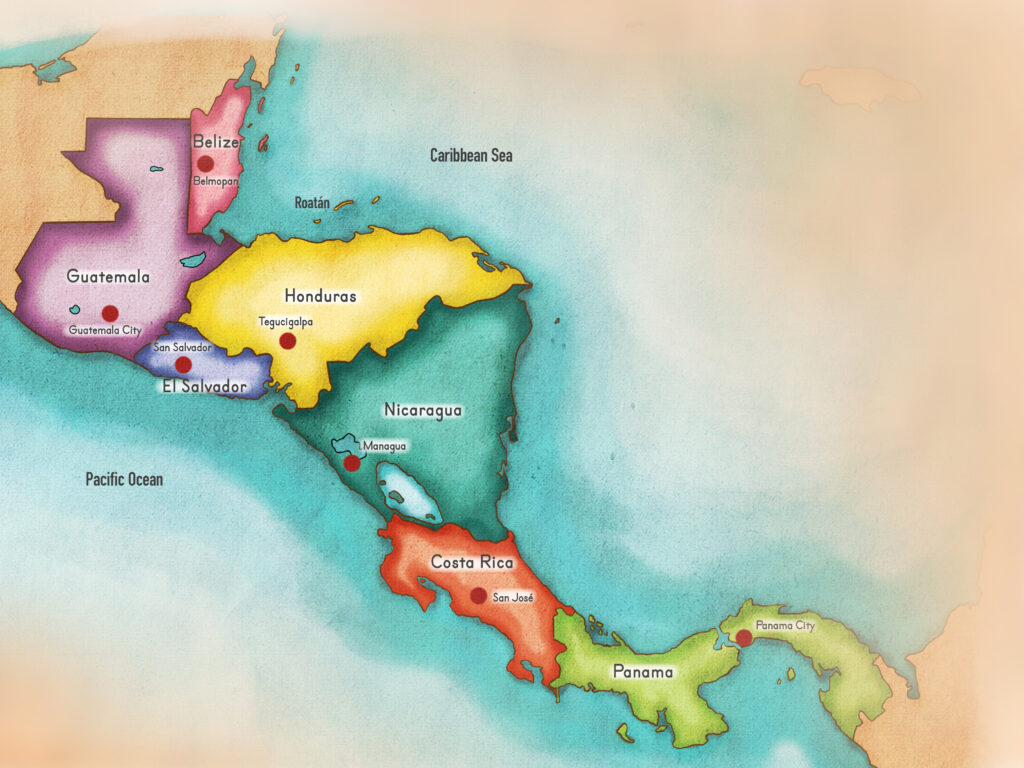MIGRATION & THE DIASPORA

(Text contributed by Roy Cayetano, Adrian Fraser, Andony Perez Castillo)
The Garifuna Nation originated on the island of St. Vincent, resulting from the intermingling of escaped African slaves with the indigenous Kalinago (Carib) people. These indigenous people, originally from the Orinoco Basin, had traversed the Caribbean island chain over centuries.
As European colonial exploitation of the Lesser Antilles began in the 16th century, the territories of the indigenous population diminished, leaving them concentrated primarily on Dominica and St. Vincent. During this period, St. Vincent faced increasing threats from British colonialists who sought the island for expanding sugar cultivation. The resulting resistance by the indigenous people, referred to as the Black Caribs or Garifuna, led to the First Carib War (1772–1773) and the Second Carib War (1795–1796).
Following the death of Paramount Chief Joseph Chatoyer in 1795, the Garifuna surrendered in 1796 and were confined to Balliceaux Island, used as a holding camp. After six months, they were forcibly exiled to the island of Roatán, off the coast of Central America, in March 1797.
At that time, Central America was under Spanish colonial control and undergoing its own political upheavals. The 2,026 Garifuna men, women, and children left on Roatán soon migrated to the mainland, gradually rebuilding their lives in this new environment. The Spanish initially saw the Garifuna as skilled fighters, farmers, and businesspeople, considering them useful as potential buffers against British incursions along the Atlantic coast. Ethnographers note that upon their arrival, 31 chiefs were documented, who later led the development of new settlements.
The Garifuna established villages but became embroiled in Honduras’ civil war for independence. Supporting the Royalists, many were forced to flee after the Royalists’ defeat. From Honduras, they migrated along the Atlantic coast, establishing settlements in what are now Guatemala, Nicaragua, and Belize by 1832.
In St. Vincent, the lands of the remaining indigenous people were confiscated after the exile. In 1804, the legislature passed an Act re-vesting in the Crown the lands held by the Garifuna under the Treaty of 1773, asserting that rebellion forfeited all claims. While some Garifuna remained in St. Vincent and were later pardoned in 1805, they lost all rights to their ancestral lands.
Population and Migration
Due to the widespread geographical dispersion of the Garifuna across Central America and cities in North America, an accurate population count is challenging. Estimates suggest a total population of approximately 300,000, with the largest number—around 200,000—residing in Honduras. Additional communities exist in Belize, Guatemala, Nicaragua, and St. Vincent and the Grenadines, though local data often does not disaggregate Garifuna from broader Carib populations. In the United States, cities like New York, Chicago, Los Angeles, and New Orleans are home to an estimated 100,000 Garifuna.
Migration has long been critical to Garifuna economic sustainability. Garifuna men historically worked in industries like merchant marines, shipping, the construction of the Panama Canal, and United Fruit Company enterprises, leaving women to maintain family and community life. Kinship networks played a vital role, enabling women to care for children and the elderly while men earned incomes overseas, particularly in the United States. Remittances from abroad continue to support local economies in Central America.
Cultural Preservation
Organisations such as the National Garifuna Council (NGC) in Belize advocate for the cultural identity, economic development, and well-being of the Garifuna people. Established through a Memorandum of Understanding with the Belizean government in 1999, the NGC is recognised as the official representative of the Garifuna in Belize. Its mission is to promote Garifuna identity and interracial harmony while protecting the environment and ensuring organisational sustainability.
In the United States, numerous organisations work to preserve and promote Garifuna culture, including the Garifuna Coalition, the Garifuna-American Heritage Foundation United (GAHFU), the Garifuna Nation, and the International Garifuna Council.
